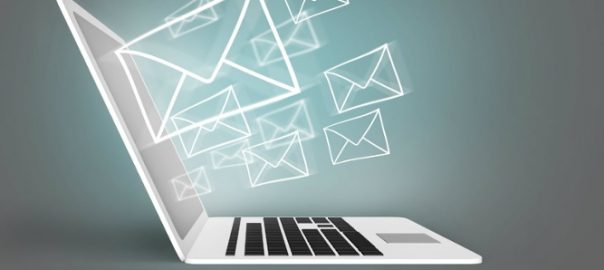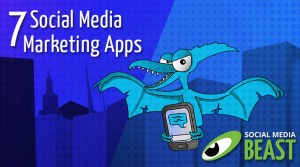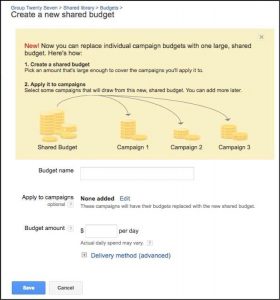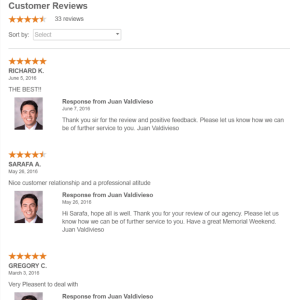
Is your company maximizing the power of email marketing—or are you still undervaluing today’s most powerful medium? Many companies are missing opportunities of what’s been called “the undisputed king of B2B marketing.” Meanwhile other companies are making incredible marketing gains thanks to their well-designed, multifaceted email programs, which typically include a wide variety of email types.
Here are just a few statistics on the power of B2B email marketing in today’s world.
- Email marketing delivers a $ 40 return for every $ 1 spent, according to the Direct Marketing Association (DMA).
- Companies are six times more likely to get a click-through from an email than from a tweet, according to Campaign Monitor.
- Email is 40 times more effective at acquiring new customers than Facebook or Twitter, according to McKinsey.
- Over 72 percent of people prefer to receive promotional content through email, compared to 17 percent who prefer social media, according to MarketingSherpa.
With these kinds of benefits, companies are leveraging email to achieve many goals that cover the entire range of the buyer’s journey, such as:
- Better lead generation. According to a survey, 87 percent of B2B marketers use email to generate new leads.
- More effective lead nurturing. Email is the No. 1 channel for driving leads, according to 73 percent of survey respondents.
- Increased subscriber engagement. A study found that 34 percent of businesses say that email marketing is a top priority for engaging subscribers.
- Revenue generation. A survey found that 31 percent of B2B marketers’ cite email marketing as the channel that makes the biggest impact on revenue.
Achieving these business goals and others requires a common email objective: Earning and retaining buyers’ attention. This means crafting emails that speak directly to prospects’ pain points, needs and ideal solutions.
1. Welcome Emails
Welcome emails are typically the first email a lead receives from a company, usually after they subscribe to a blog or newsletter, or sign up for a free online course or lessons. Rather than just sending a bland cookie-cutter “welcome to our blog” email—or, worse, not sending a welcome email—why not use the opportunity to deliver a more powerful message?
First impressions count, and welcome emails are the perfect opportunity to make a good one. Plus, prospects’ response to your welcome email can add vital data to their behavioral profiles, which you can use to conduct behavior-based email marketing.
Here are ideas for making the most of your welcome emails.
- Strike the right tone. Welcome emails should be as warm and inviting as you’d be if you were welcoming someone into your offices.
- Introduce the company. Begin building a strong, informal relationship right from the start.
- Add value. Welcome emails don’t only have to deliver a welcome message. They can add value, such as including links to customer support, to social media sites and to relevant whitepapers or eBooks. All of these options will help build and deepen your relationships.
2. Thank You Emails
Not only should you welcome new leads to your company, but you should also remember to say “thank you” at every opportunity. Thank you emails demonstrate common courtesy and appreciation for your leads and prospects. A natural reason to send a thank you email is when people download your content, such as whitepapers, success stories and eBooks. This also can have the added benefit of giving you insight into behavior-based email marketing, by building more actions into your prospect profiles.
Here are ideas to make the most of your thank you emails.
- Send one every time anyone completes an action on your website. Thank you emails should not be a “nice to have” aspect of your email program. They should be standard features used liberally.
- Consider using plain text. Using plain text thank you emails rather than HTML-designed templates can look more authentic and feel more genuine.
- Include a link to the content. Even if your system includes an automated download of your documents, you should also include a link in the email. This achieves a few goals, including giving your leads a second opportunity in case they forgot to download the document the first time. It also gives them an easy way to share the email and link with others.
3. Newsletter Emails
Newsletters are ideal vehicles for achieving several marketing goals, including staying in touch with prospects, sharing company news, building greater brand awareness and building a relationship with people interested in what you’re selling. Their clicks on your newsletter add important insight into their behavioral profile.
For example, SaaS company SmugMug is a platform for gorgeous and secure online photo sharing. Email newsletters are a core part of its communication strategy:

Here are ideas for making the most of your newsletter emails.
- Think short. Ideally, your newsletter content should consist of digestible chunks of content versus long blocks of text. The short bites can include links to more information on your site. To help break up your messages and make them easier to read add images, headlines, subheads and bullet points.
- Think simple. Have you ever opened a cluttered newsletter email, felt overwhelmed and just gave up? You don’t want that to happen with your emails. To prevent this catastrophe keep your design as lean and clean as possible. Stick with basic fonts. Only use a few colors. And keep the layout simple.
- Think value. There’s no point in sending your leads, prospects and customers an email newsletter if you don’t have something interesting and valuable to say. Every tidbit of information in your e-newsletter should share value, such as teaching subscribers something unique about your business, their business or your industry.
4. Promotional Emails
Promotional emails are typically the driving force of companies’ road to new revenue because they make direct product and service offers to prospects, enticing them to make a purchase. Use promotional emails every time you have a specific offer to deliver to your leads, prospects and customers. Promotional emails don’t require a lot of explanation; you just need to state the deal and tell prospects how to redeem the offer. A great example is the email below from manufacturer Coats.

Here are ideas for making the most of your promotional emails.
- Make your offer crystal clear. People typically give each email only a few seconds before ignoring, deleting or taking action. So make the best use of that time with a clear and direct offer. Include a powerful headline, relevant image or graphic and a button or link. If you need to add some text, make it short and to the point.
- Convey the offer in the subject line. The right subject line can make or break a promotional email. Be sure to tell your customers you’ve got something new and valuable for them to check out.
- Create a sense of urgency. Your prospects may tend to let your promotional emails sit in their inboxes unless you give them a reason to act quickly, such as a deadline.
5. Educational Emails
A growing number of companies are achieving their marketing objectives through an educational approach (or inbound marketing), including online courses, lessons and tips. The purpose of educational emails is to provide your leads and prospects with valuable industry knowledge connected to your business or product. This method of outreach helps attract leads and build stronger relationships and trust. For example, job search site Monster.com sends people useful information about life in the workplace.
Here are ideas for making the most of your educational emails.
- Brainstorm brilliant ideas. Your educational emails must include real value, while also building your company brand. So, before launching an educational email series, dig deep to create something that’s both valuable and different from your competitors.
- Deliver content in manageable increments. Like other forms of content marketing, educational tools should be broken up into small, manageable chunks. If you have one lesson to teach that is long and detailed, think of ways to break it up into smaller lessons.
- Include a (friendly) promotion. Although your educational emails are free, they can help support sales of companies’ products or service. For example, you can include blurbs and links to web pages with products, services or memberships.
6. Testimonial Emails
Done right, testimonial emails can be among the most powerful emails in your repertoire because they reinforce how valuable your business or product is through customer feedback.
A great example is from the Royal Children’s Hospital Foundation. In one example, the healthcare entity used testimonial emails to tell stories about how fundraising impacted its research, patient care, new equipment and the lives of individuals. This is a great way to inspire support and giving back. When you gather your next customer testimonial, consider formatting them into an email to share with your list.

Here are ideas for making the most of your testimonial emails.
- Create a sleek design. Aim for eye-catching and easy to read, so your emails will to stand out from other emails filling your prospects’ inbox. Feature customer quotes from happy customers prominently. People love to hear what others have to say about a company.
- Include an image. No matter what you sell, images are powerful. The most potent images in testimonial emails are photos of the people speaking. If that doesn’t work, aim for the most interesting image you can find that helps you tell your customer’s story.
- Offer more information. A testimonial is great, but you should offer your customers a next step as well. A great idea is to include a link to more testimonials. You could also link to interesting company news or a demo offer.
7. Survey Emails
Surveys are becoming a bigger part of many companies’ overall marketing programs. That’s not surprising because they can deliver incredible insight. For one thing, companies gain the opportunity to collect helpful information they can use to improve their customer experience, products and marketing.
Here are ideas for making the most of your survey emails.
- Explain the survey’s purpose. One way to boost participation is to tell prospects and customers why you want the information and why it’s valuable for them to participate. Examples of reasons include: understanding the marketplace better, designing products others need and improving current products to better meet customers’ needs.
- Ask the right questions. Make sure the questions you ask will yield helpful results. Stay on topic and reword questions if necessary to ensure they are understandable.
- Offer incentives. Some companies offer a variety of rewards for completing their surveys. This can boost participation considerably. Typical rewards include gift cards to Amazon or Starbucks, a promotional discount or a copy of the finished report.
According to multiple studies, email is today’s most powerful form of marketing for the entire range of the buyer’s journey—from lead generation, to prospect nurturing, to sales and retaining customers. If you haven’t already, it’s time to consider expanding your email repertoire with a wider variety of email types, so you can maximize your marketing program and begin reaping the many rewards.
Digital & Social Articles on Business 2 Community(90)









